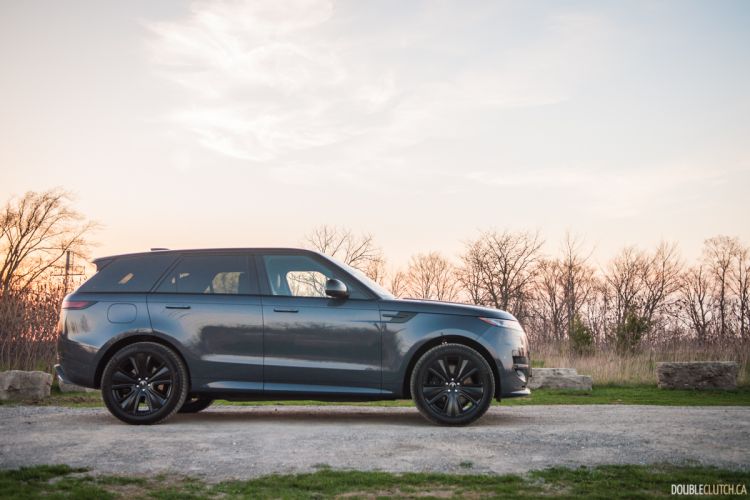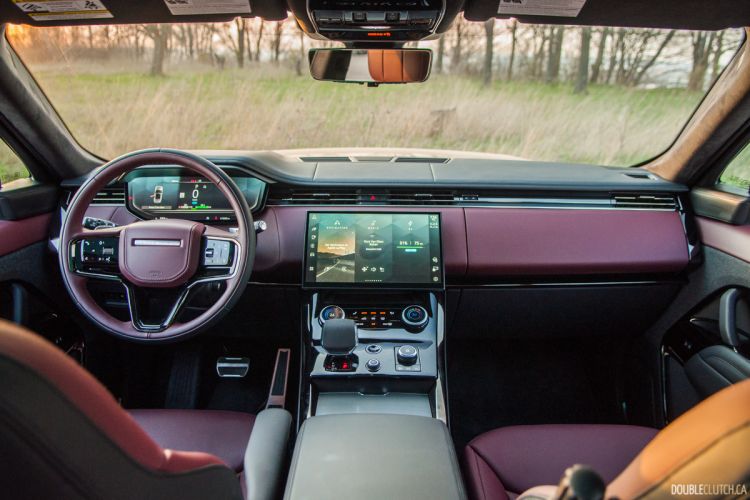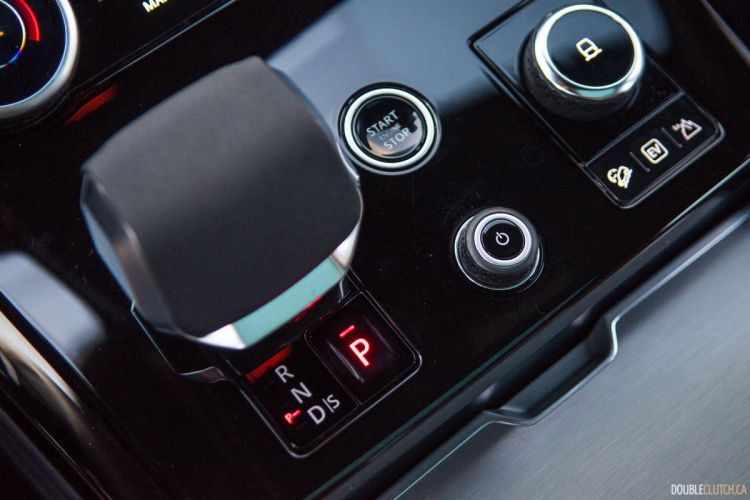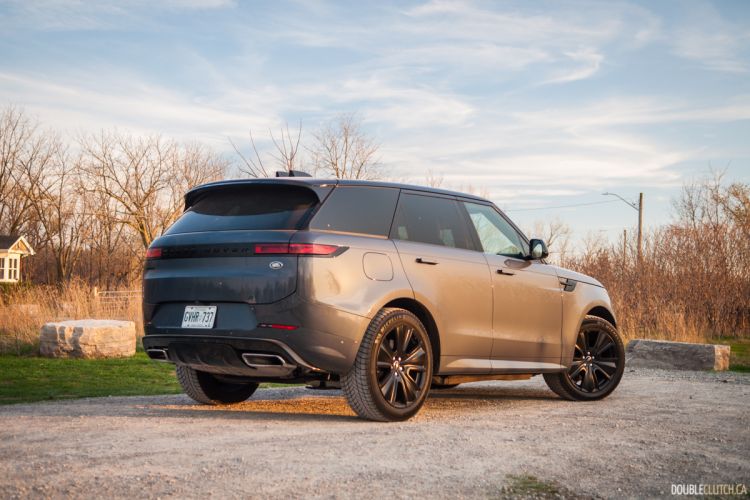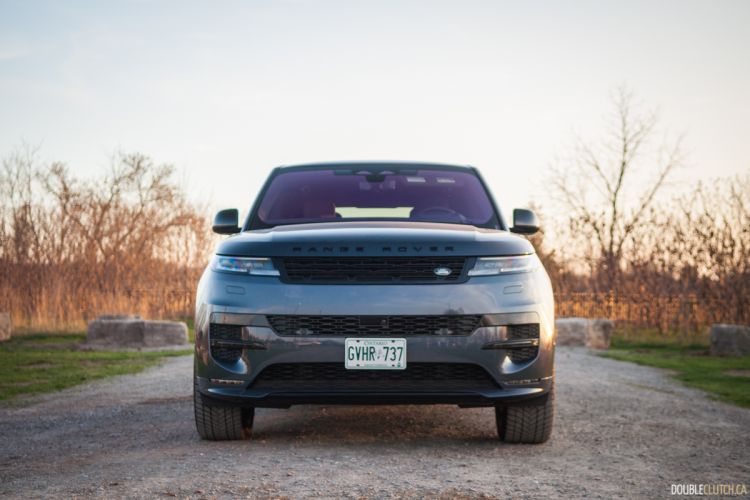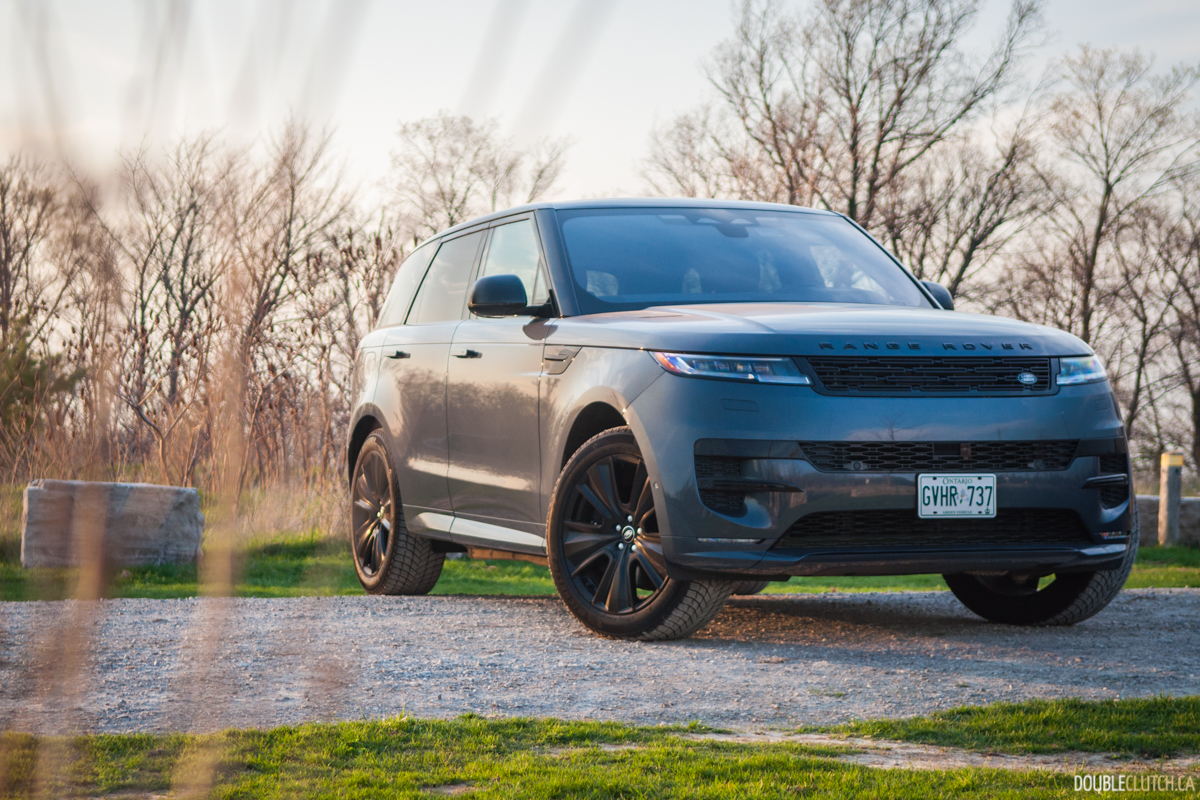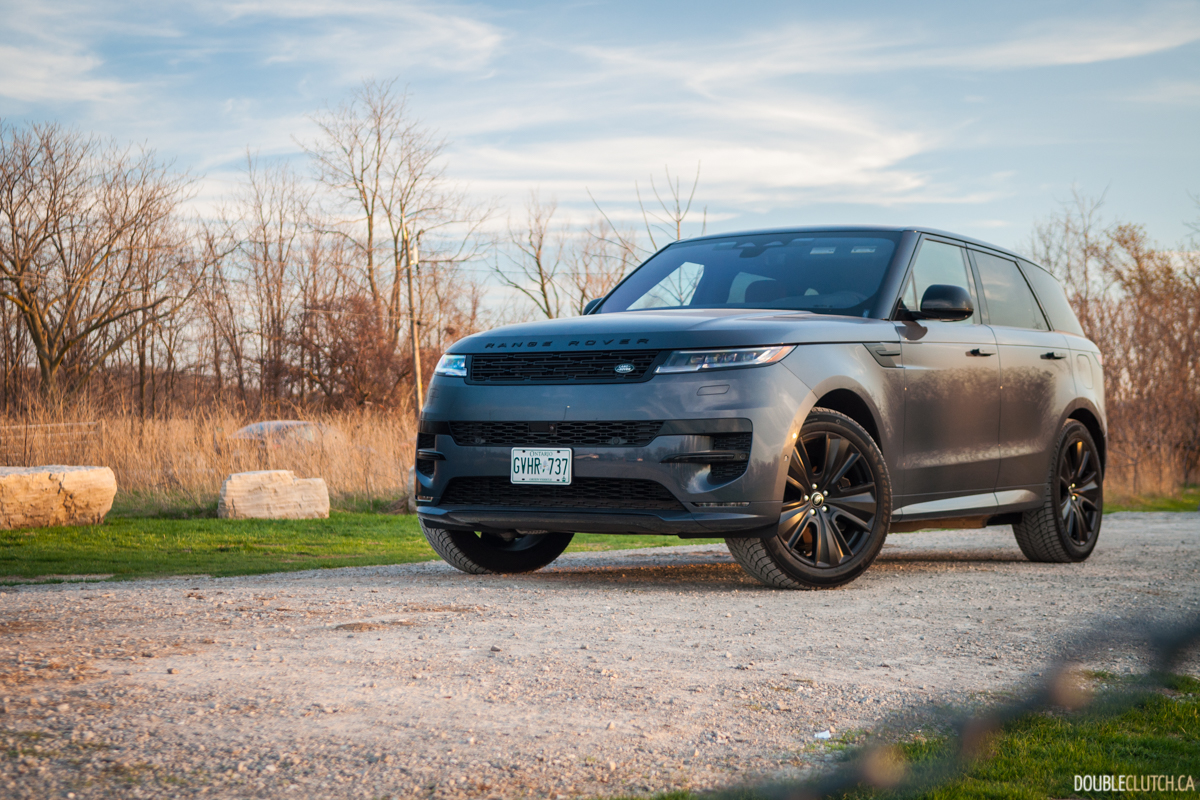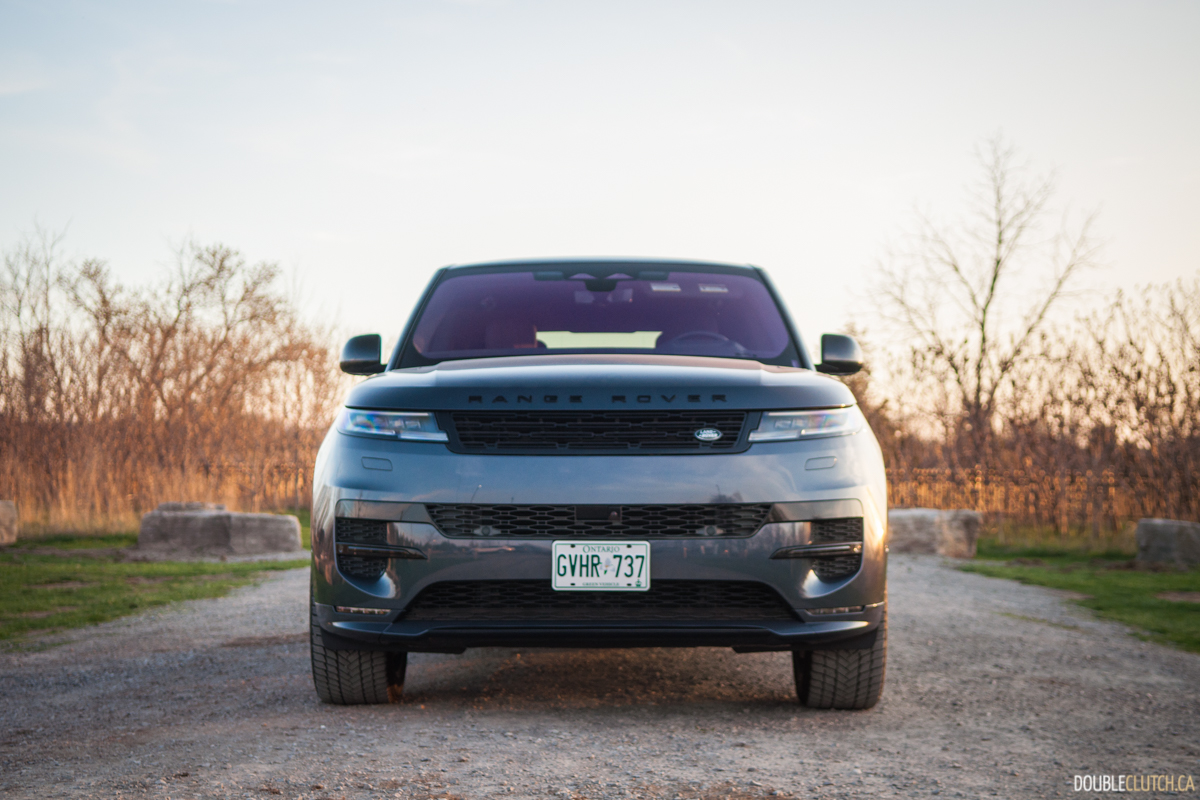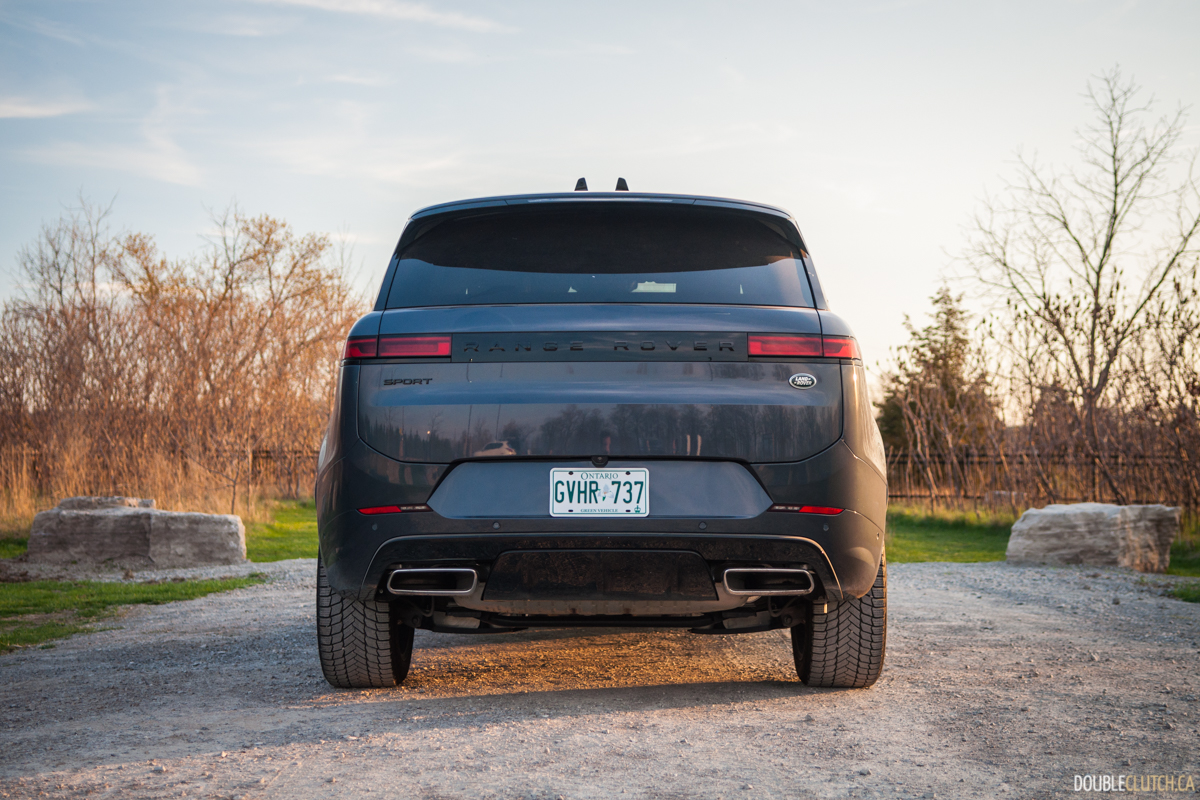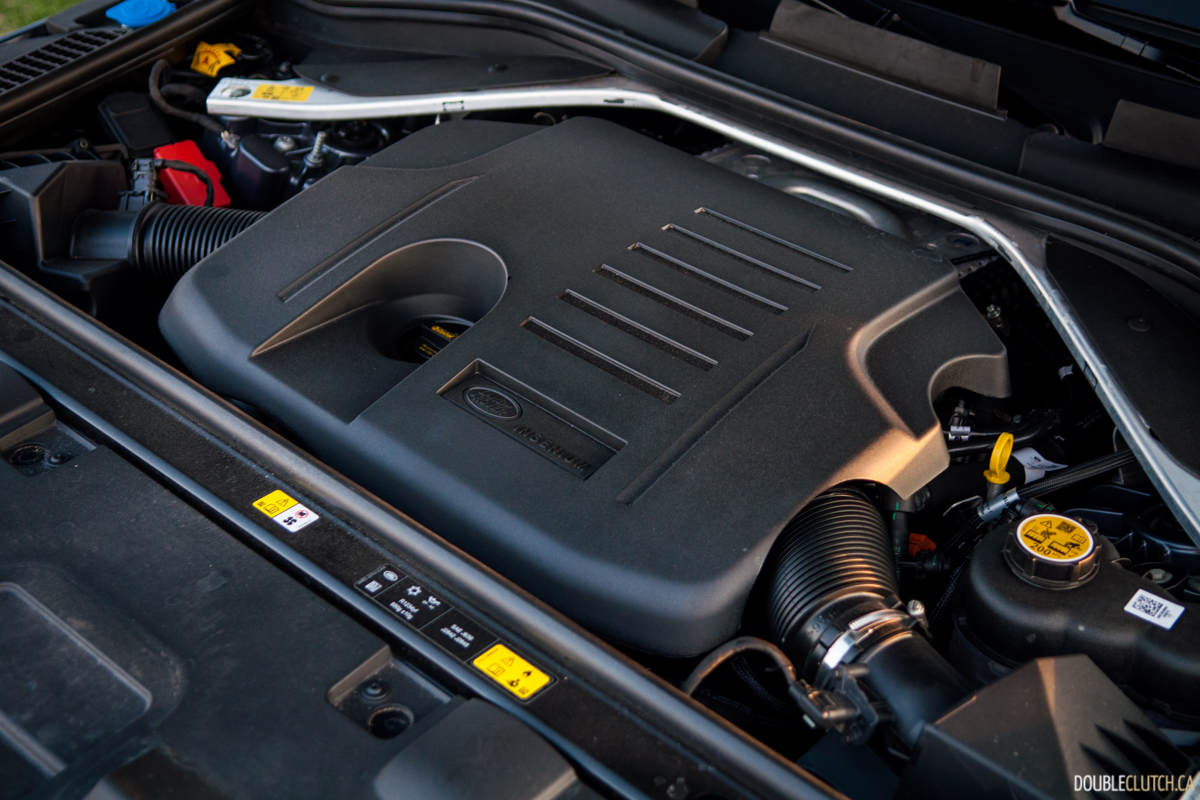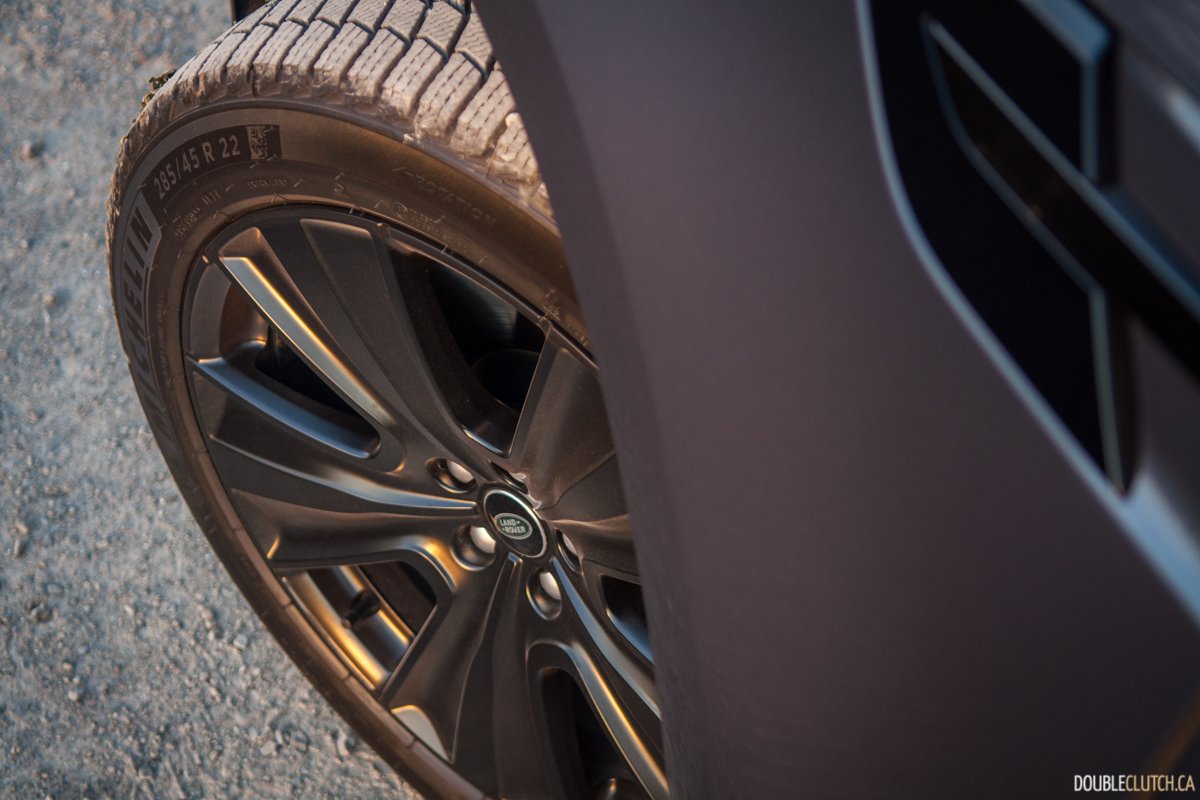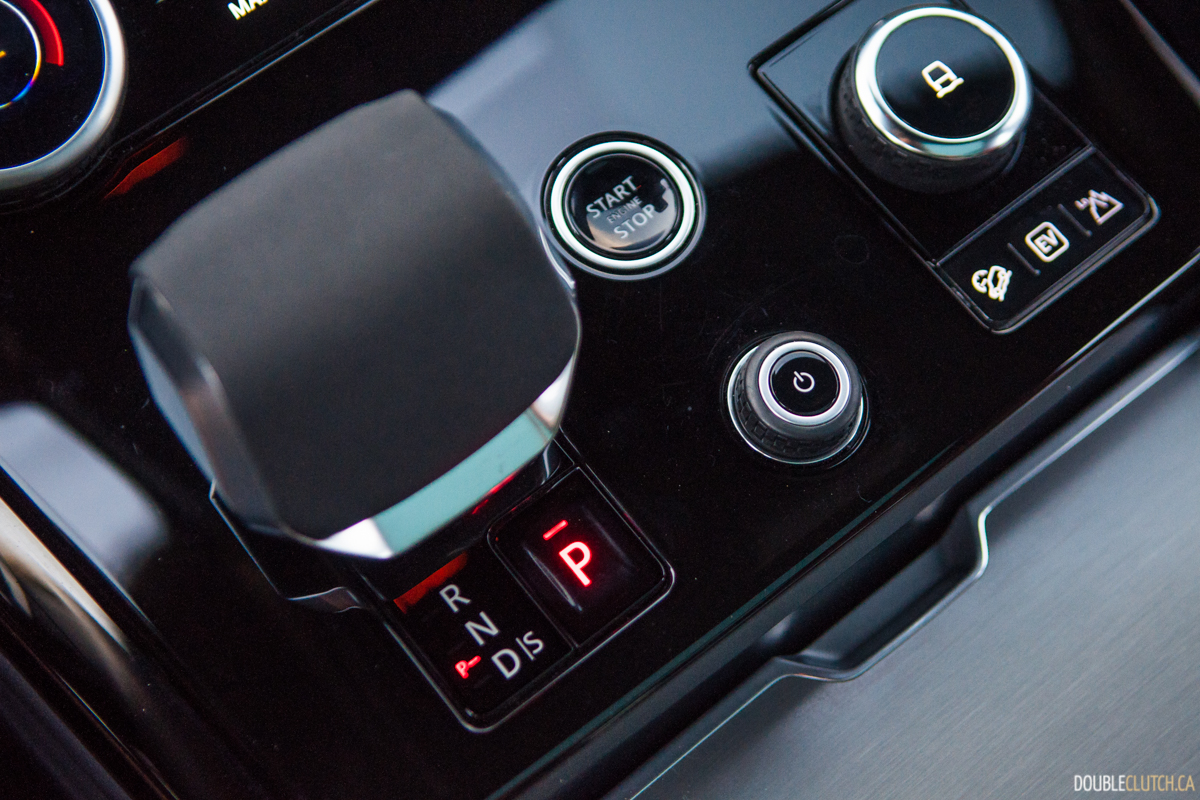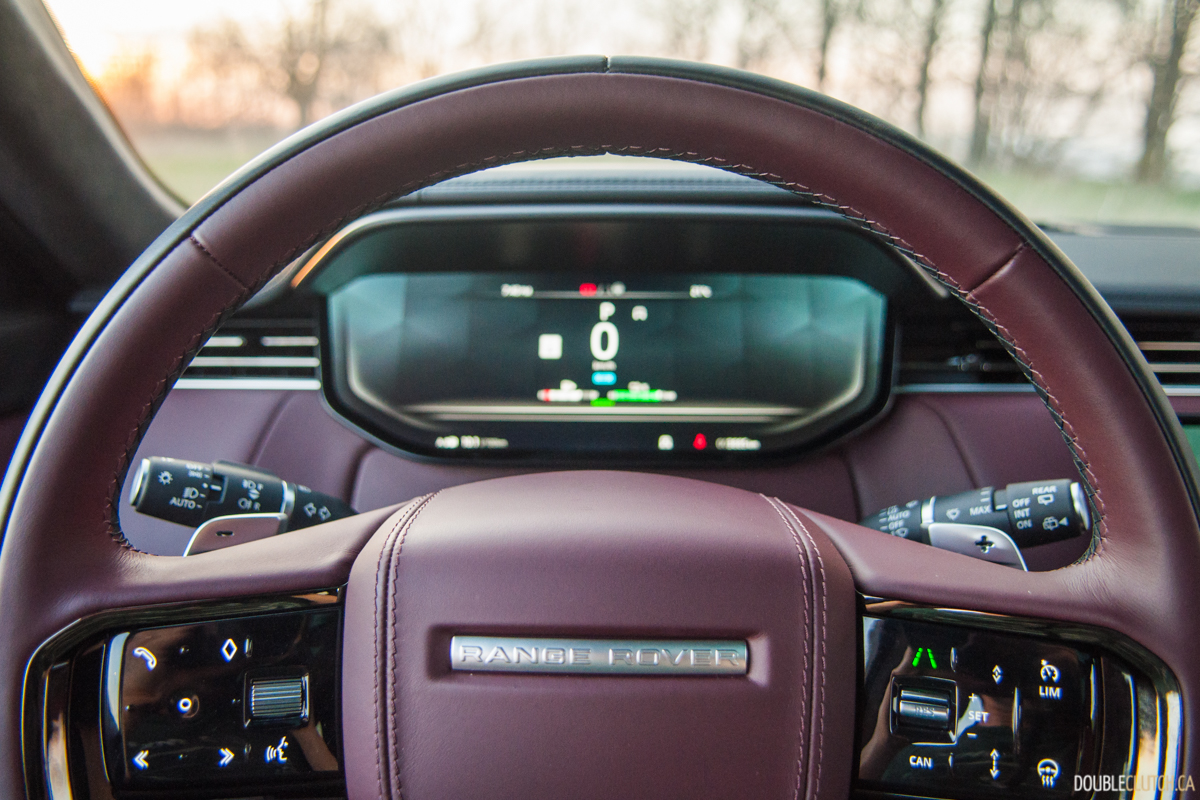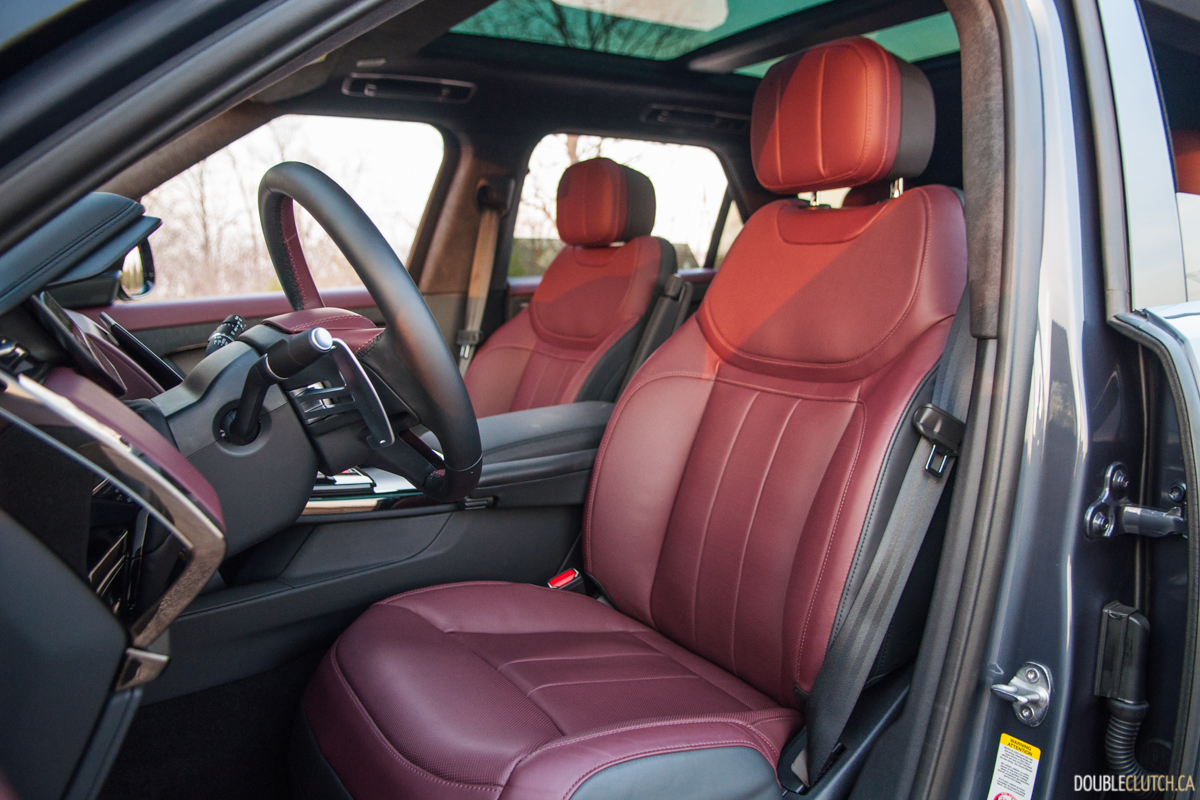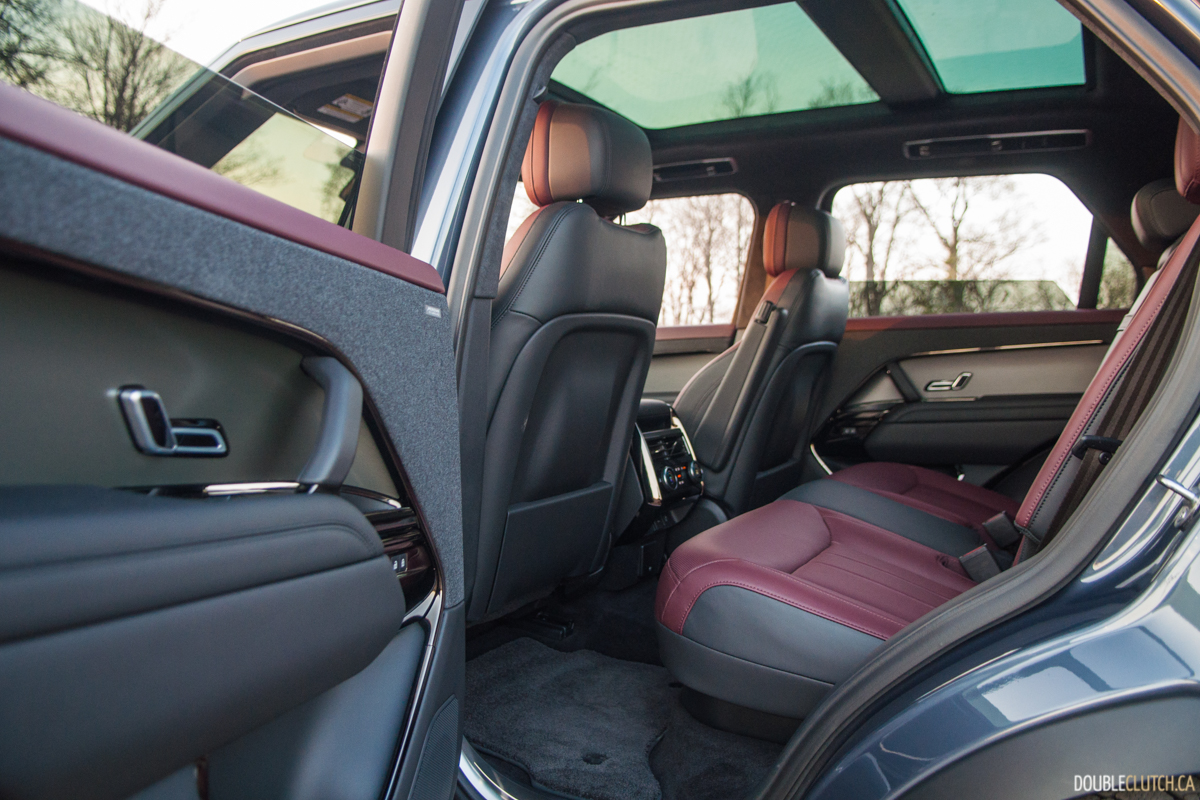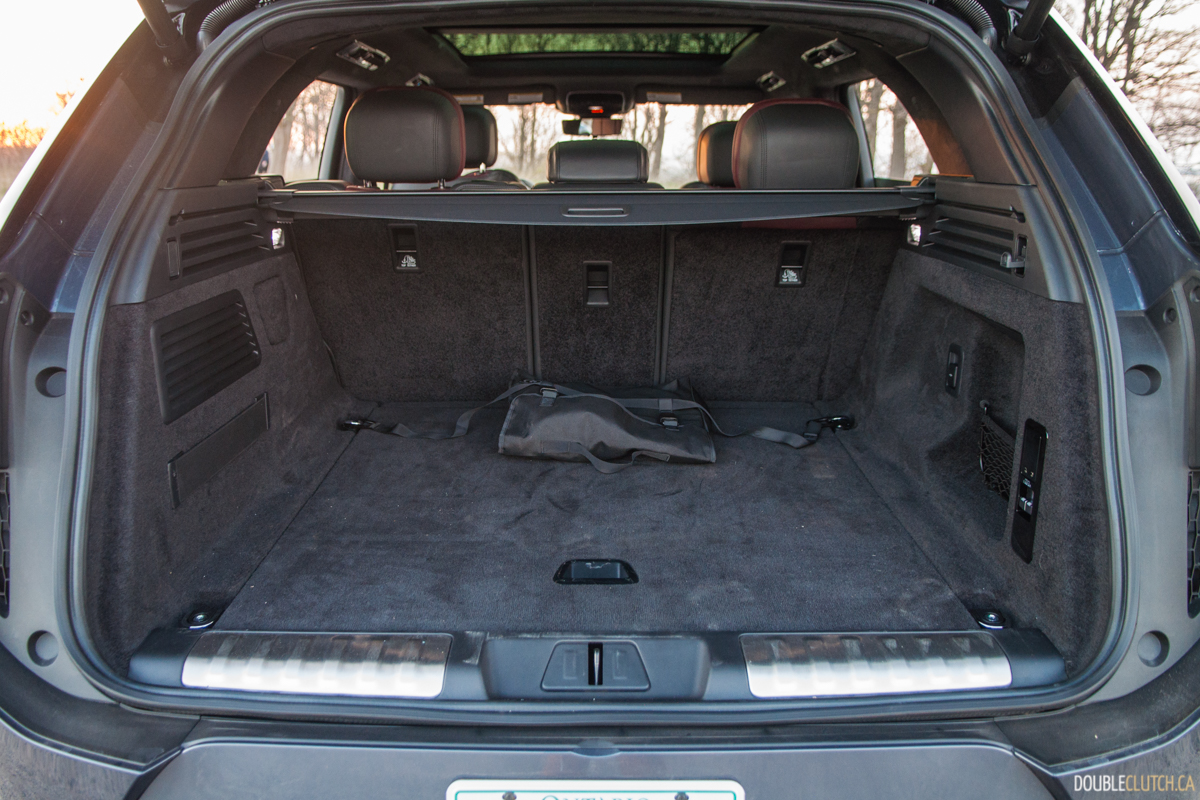It was roughly 1970 — coincidentally, the same year the original Range Rover was introduced — that Land Rover started to be more about image, and less about utilitarianism. In the 50-odd years that have passed, the British marque evolved from being the default choice among farmers, to the default choice among the Royal Family and most of Hollywood’s elite. Nowhere is this more prevalent than the 2023 Range Rover Sport P440e PHEV.
The first thing you’ll notice about the Range Rover Sport is its sense of style. It’s been refreshed for 2023 with a nip here, a tuck there, and some new powertrain options — more on that later. Most luxury SUVs these days are a mess of creases, jagged lines, and massive grilles, but the Range is definitely more subtle and sleek — almost understated — while still maintaining a strong and bold presence. Hope you like chatting with strangers, because this thing will attract a lot of compliments.
The second thing you’ll notice is the sumptuous interior. Nobody does interiors better than the Brits, and the Range Rover Sport is no exception. Almost everything you touch is buttery smooth leather, fuzzy suede, or cool metal. The carpets are so plush, you’ll almost want to go barefoot whenever you climb in. And like any other luxury sport-ute worth its salt, you’re completely isolated from the world around you — the double-pane glass and copious sound deadening allow very little of the outside world to filter through.
Naturally, there’s a boatload of tech at your fingertips. Hell, there’s probably more tech in the driver-side door panel alone than an entire ‘90s RAV4. Infotainment is handled by Jaguar Land Rover’s so-called Pivi Pro system through a 13.1-inch touchscreen. The graphics are crisp, the display is highly responsive, and the overall interface is fairly intuitive. We especially appreciated the menu bar that stays on the screen full-time, letting you quickly toggle between CarPlay (or Android Auto) and the native infotainment. The central display is augmented by an equally sharp, crisp, and highly customizable fully digital gauge cluster.
That said, while the Range’s interior is mostly a hit, there are a few misses. For starters, while the seats are plush and incredibly comfortable, shorter drivers might find it challenging to find a just-right seating position, as the steering wheel doesn’t telescope out far enough. There’s a learning curve to some of the controls. For instance, there are three functions baked into the climate control knobs — push down to adjust the level of seat heating or cooling, pull up to adjust the maximum fan speed, and of course, twist to adjust the overall temperature. Clever in theory, but in practice, it’s two too many.
Furthermore, the Range uses a mix of physical switchgear and haptic-feedback touch panels on the centre stack. We won’t bemoan the volume knob, but the touch panel you’re forced to use to adjust more climate functions is finicky. Again, hiding it all behind a shiny black panel is clever and slick-looking in theory — and not to mention, cheaper — but in practice, it isn’t particularly responsive. You need to tap hard, or more than once, to activate certain functions. And for those of you who like to go windows-down, there’s no dedicated ‘off’ button for the climate control.
What’s up with that? What’s wrong with physical buttons and knobs? Why would a loving God cause such agony?
Can we also take a moment to complain about just how much shiny black trim is in here? Jeez! The rest of the Range’s materials are absolutely lovely, but trim that shows every little fleck of dust, fingerprint, and micro-scratch — not to mention produces a buttload of glare on sunny days — is unbecoming of a luxury SUV. Yes, buttload is an actual unit of measurement. Look it up.
All that said, you’ll have plenty of headroom and legroom all around regardless of where you’ll sit, and there’s plenty of room to haul your stuff. Specifically, 835 litres with the rear seats up, and 1,860 with them stowed. That was enough for the Range to swallow a few massive boxes of unassembled patio furniture; we’ll even dish a few bonus points for being able to lower the rear air shocks for easier loading, not to mention nudge the front seats forward when you fold down the rears, via the touch of a button — an actual button, not a touch panel with haptic feedback — in the cargo area.
You can spec your Range Rover Sport with a multitude of various powertrains. Our particular tester was the P440e model, denoting a plug-in hybrid powertrain. It starts with a 3.0-litre turbocharged inline-six under the hood, augmented by a 105 kW electric motor and a 38.2 kWh battery pack. That results in some pretty impressive numbers: 434 horsepower, 457 pound-feet of torque, and an estimated 77 kilometres of electric-only range. An exceptionally smooth-shifting eight-speed automatic is your only transmission option, and Land Rover quotes an official zero-to-100 km/h run in about 5.8 seconds. All that is to say, not bad for a big-ass SUV.
But for better or worse, the Range feels much more docile than those 400-plus horses suggest. Its powertrain certainly doesn’t match the beastly exterior; floor it and it’s as though the Range needs a sec to figure out just how many beans it needs to give before shooting you ahead. Flipping it into Sport mode wakes things up by leaning on the gas engine more, but when left to its own devices, it’s all bark and surprisingly little bite.
The plug-in Range Rover Sport makes up for that with excellent ride quality, virtually non-existent wind and road noise, and surprisingly great fuel economy. Don’t be surprised if your real-world EV range is closer to 80 kilometres, but it’s difficult to accurately pinpoint how frugal it is. Neither Land Rover nor Natural Resources Canada have released official fuel economy figures — we averaged just over 10 L/100 km according to the trip computer, and given the eagerness of the electric half to kick in even at highway speeds, we even saw fuel economy dip as low as 8.9. If you have easy access to a plug, and most of your drives aren’t excessively long, there’s a very good chance you’ll rarely burn gas.
For just over $140,000 as-tested, the 2023 Range Rover Sport P440e PHEV isn’t the cheapest way to pretend to save the world, but then again, the world has changed a lot since 1970. There’s no denying that today, Range Rovers are mostly about image — and it’s important to be seen plugging in at the country club on weekends.

